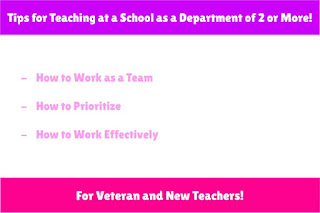Classroom Routines for Spanish Class: Map Partners!
Classroom Routines for Spanish Class: Map Partners!
Back to School season and the first few weeks of school are the most important times of the year to set up Classroom Routines! Routines are vital to successful classroom management. But routines don’t have to be boring!
I wanted to share a classroom routine I’ve used since my first year of teaching - Map Partners!
In quick summary, it sets up pre-determined partners for the entire quarter/semester/year and it reviews Spanish nationalities and where the countries are on a map, all year long too!
What are Map Partners and How do I Set Them Up?
Students will each have a printed sheet of a world map with lines pointing to the Spanish-Speaking countries. They will use this sheet for the length of their time in class (trimester/semester/etc.)
They will walk around and fill out each line with a different person’s name. They need to make sure they write each other’s name on the same line. This is very important!
Throughout the year, whenever you need students to have a partner for an activity, you can say, “Your partner today is from Perú” or “Your partner is Peruvian”. (Of course once they’ve learned “ser” you can say this in Spanish!)
You can take an additional 10 minutes afterward to verify everyone's worksheets lined up by making it a "game" like "Go find your Bolivia partner" and have them get out of their seats finding all of their partners.
That way, it ensures this worksheet will be flawless for the entire semester!
How this Activity Benefits Students, and Helps with Classroom Management:
Each time you do a partner activity, it has them find a country (reminding them where the Spanish-Speaking countries are on a map)
Students will hear the Spanish nationalities vocabulary throughout the year
They’re working with different classmates each time you utilize this Partner Map resource.
You don’t have to spend time setting up partners for an activity, the class can simply jump right into your planned partner activity!
What else can I do with this Activity?
Students will color-code a separate sheet with all (19, 20, 21) Spanish-Speaking countries on a world map. The activity includes all 21 countries, 20 (excludes Equatorial Guinea) or 19 (excludes Spain & Equatorial Guinea, focusing on Latin America)
You can use it to help the class get to know each other’s names during the first week of school. Spend 5-10 minutes a day, “finding your partner from ___ country”, and repeat as necessary! It also will ensure everyone’s worksheets are set up properly!
Use it when students learn conjugations of Ser. They could use their partner map, and describe all of their classmates in complete sentences. For example, if student Bob has his name on the Bolivia line, students could write:
“Bob es boliviano”.
“Bob es de Bolivia”.
Tips for Making this Successful:
Have students get familiar with the countries first by color-coding the map.
Model how this activity will go when it comes time for students to write each other’s names on the lines. Picking students who are good role models, or could benefit from the modeling firsthand, choose 3-4 students and yourself.
Give each a pretend paper, walk up to student A and say “Hola, ¿Cómo te llamas?” (they’ll answer “Me llamo Student A”). “Student A, do you have someone written for México? Ok let’s write our names on each other’s México line”.
Go to student B and model as if they already have Guatemala filled in, and then say “Okay, how about El Salvador instead?” and fill that in.
Try to have students fill in their maps going top to bottom, and then it will be less likely to have gaps.
Depending on class size, you may have students who need to repeat being partners with someone.
If someone is absent the day you are doing this, you as the teacher may need to go around the room pretending to be the absent student, and filling out the sheet as them.
If your school likes to pull “last minute” schedule changes for students like mine often does, wait a few days until you’re sure there won’t be any last minute schedule changes.
If you suspect students will lose these you have 2 choices:
Collect them and keep them in a folder for days you will use them. On those days, you’ll spread the sheets out and have students find their sheet, and then find their partner.
Pro Tip! Scan these first AND keep them in a folder. That way if a student walks away with their map on a day you handed them back out, you can always re-print it to add back to the class hour’s folder. (in black and white, but oh well!)
If you want to save yourself time from creating this activity, you can check out a Preview by clicking here.
It includes:
✅3 maps for students to label and color all 21 Spanish-Speaking countries, 20 (excludes Guinea Equatorial), or 19 (excludes Spain and Guinea Equatorial, focusing on just Latin America)
✅ 3 maps to write down classmates’ names (with 21, 20 or 19 countries)
✅Projectable Student Instructions
✅Detailed Teacher Instructions
How to facilitate this activity initially
How to use this resource all trimester/semester long
.jpg)
